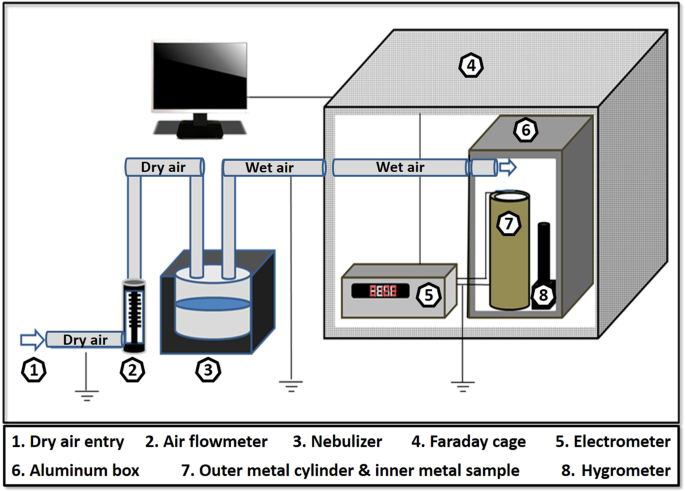You might have noticed that arid environments make it easy to build up static electricity, and you might recall that Ben Franklin pulled some power from a thunderstorm with his kite experiment. Did you know that high humidity and the right metal combination can result in a battery?
People have been thinking about this effect since 1843. It even has a name: The Armstrong Effect, named after Lord William Armstrong. The well known 19th century Physicist Michael Faraday published a paper about the effect in relation to an electrocution caused by high pressure steam frictioning of a metal boiler. In the same way that dragging your feet on carpet builds up charge on a person, dry (high pressure and temperature) steam dragging along the surface of the ruptured boiler rapidly built up enough charge to electrocute a person standing nearby. Poor guy was literally shocked to death.
Anyway, the point is that humid air has some electric potential (Physics pun intended). The experimental setup is pictured below.

You can read all of the detail in this article, but the short story is that a chrome-plated brass cylinder aced like a capacitor and acquired almost 1 Volt (AA batteries are 1.5 Volts) when the humidity went above 65%. The trick is how to construct surfaces that take advantage of this effect in sufficiently humid environments. Many poor and developing countries have the right climate, but do not have infrastructure for delivering energy. Imagine having the ability to generate electricity for useful work because it’s muggy outside and you have the right materials on hand.
The original research article: Lax, J.Y., Price, C. & Saaroni, H. On the Spontaneous Build-Up of Voltage between Dissimilar Metals Under High Relative Humidity Conditions. Sci Rep 10, 7642 (2020). https://doi.org/10.1038/s41598-020-64409-2